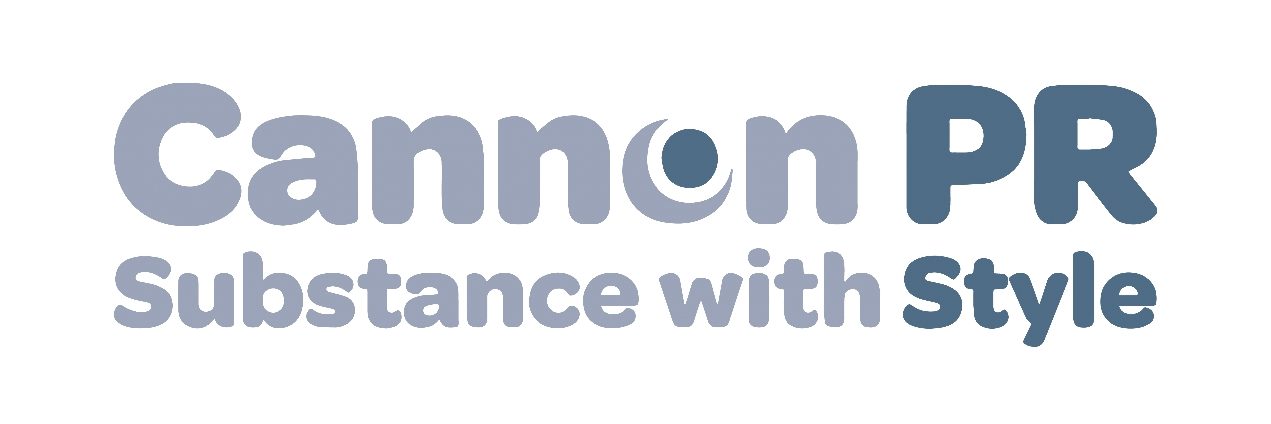How a crunchy colossus helped to transform the fortunes of a small independent cinema
This week marks an exciting moment for Rotherham: for the first time in a generation, visitors to the town will have a chance to enjoy a trip to the cinema. I was delighted to discover today that ahead of its official launch in September, the new Arc Cinema is planning to open its doors for the very first time this weekend.
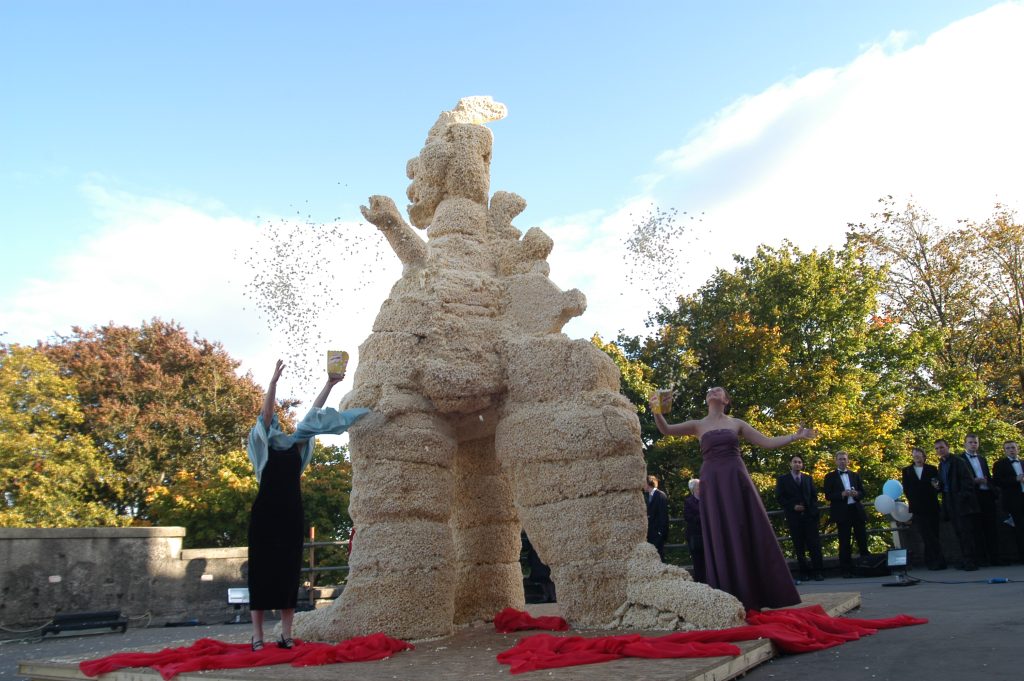
For me, there’s always something very special about the cinema. It’s the smell of popcorn lingering in the foyer and the neon lighting; it’s the posters showcasing the latest Hollywood offerings and of course the people, eagerly waiting in anticipation for the screens to open. If you spend time people watching at a cinema, you’ll quickly spot friends meeting up, nervous couples enjoying a first date, but most likely you’ll see people of all ages, from teenagers trying their luck on the brightly coloured video games to pensioners simply enjoying a day out in each other’s company, all eagerly waiting to be parachuted into a new adventure by the magic of the silver screen.
When Rotherham’s last cinema closed its doors in 1990, it left a void in the town. It’s been a loss that has been mourned ever since. When I was given the opportunity to ensure another town didn’t face a similar fate, when its own longstanding cinema was facing closure, it was a chance I took with both hands.
The first step to any successful PR campaign: research
In 2003, during my time working in Scotland, I was asked to develop a PR campaign to help transform the fortunes of a small independent cinema, Stirling’s Allan Park Cinema, which had been keeping the town entertained since 1938.
The large art deco cinema, which once screened films to a 2000 strong audience, had been divided into a multi-screen cinema and a bingo hall. It was the last sole survivor of a once 18-strong chain of cinemas, which operated across much of Scotland, before the company turned its attentions to the opportunities offered by the bingo industry.
For many years, the company that operated the cinema chain had been slowly withdrawing from the cinema market, with those grand old theatres finding new homes as bingo halls. However, Stirling was different.
At the time, there wasn’t another cinema for miles around, and even though it had been losing money for a number of years, the owners felt a strong sense of duty to support the communities they served.
My task, at least on paper, was a relatively simple one: find ways of returning the cinema to a break-even point. Anything beyond that was considered to be a bonus.
I was living in Stirling at the time and a regular visitor to the cinema. I began thinking about my own experiences and what influenced my decisions to head to the flicks.
It’s perhaps worth remembering that back in 2003, social media didn’t offer the mainstream audience reach it enjoys today. In fact, it would be another two years before platforms like Facebook became widely accessible. Back in 2003, newspapers were still king, with over 12.5 million sold on a daily basis.
Even the internet was still very much in its infancy, and small independent cinemas were not early adopters of the technology!
Instead, when trying to find out what the Allan Park had to offer, I would check out the free newspaper pushed through my door. If that didn’t reveal anything, I’d head out and buy the latest copy of the Stirling Observer.
Inside the Observer, I would look out for the tiny weekly advert, which simply displayed the name of the film and its screening times.
Of course, this was just my own experience. I was acutely aware that I was fairly new to the city, so I began conducting my own research by asking friends, strangers… anyone who was prepared to talk to me to tell me what they knew about the cinema. And perhaps more importantly, what determined whether they would visit.
“I used to go there all the time. Loved it. But I thought it had closed years ago!”
There were more than a few people who said this to me, and it became very clear that it wasn’t simply the case that Stirling had fallen out of love with the cinema, or indeed the Allan Park, but that to the vast majority of the populous, they were blissfully unaware of its existence. Clearly, the tried and tested advert was no longer working.
When a multiplex opened its doors in the nearby town Falkirk, audiences began to dwindle even further.
If audiences were going to return to the Allan Park, then new ways to engage with potential cinema goers would be needed. However, this would prove not to be as straightforward as I first anticipated.
Faxing challenges
One of the first breakthroughs I achieved was through an open discussion I had with the Stirling Observer, and whether there would be an appetite to profile some of the films being screened in the cinema in the newspaper.
The newspaper was receptive to the idea, on two conditions: firstly, I supplied the copy, secondly, that all content was provided to them to meet their print deadline of 1:00pm every Monday.
When I relayed the good news to the cinema, I was met with some concern. The main problem being that most weeks, they were unaware as to what it would be screening until a fax arrived mid-Monday morning.
Clearly, it would be impossible for me to unleash my inner critic, but by using the marketing materials provided by the cinema and in some cases, working directly with the studios, I was able to source enough information to produce the all-important film synopses.
Time to get creative
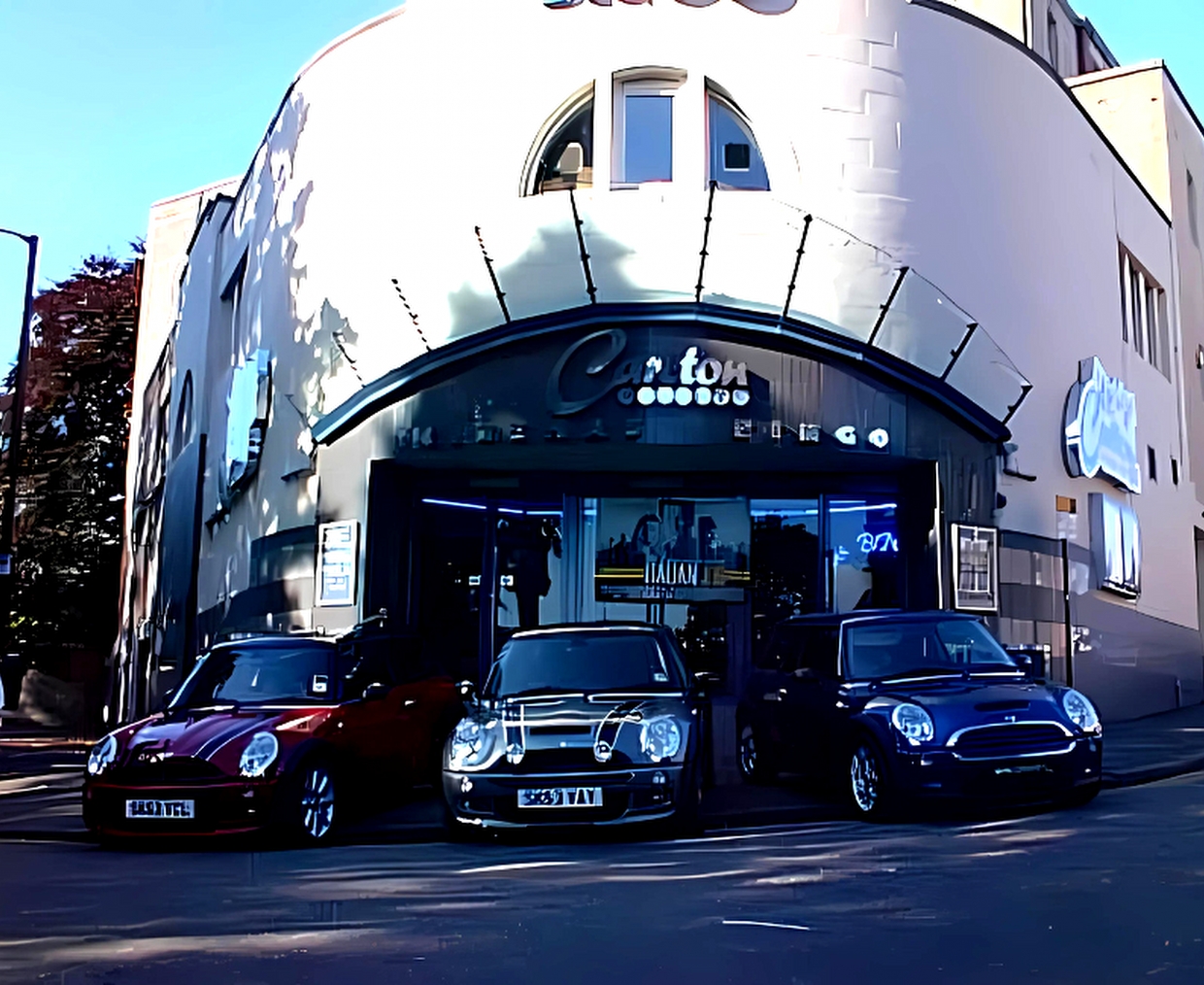
Of course, whilst the Stirling Observer was a very important media channel for the city, if audiences were to return, then the reach needed to be extended. This meant thinking more creatively about the media opportunities surrounding the cinema and its offering and how to capitalise upon them.
I began forging working relationships with other media partners including local and regional radio stations, and with the cinema now fully on-board, I was given the go ahead to explore more creative routes to market.
To maximise the media impact of planned releases, I began exploring new ways of engaging with cinema audiences. Birds of prey visited the cinema to coincide with the release of Lord of the Rings. Following a successful discussion with a BMW dealership, a photoshoot was arranged showing Mini Coopers bursting out of the cinema doors to coincide with the Italian Job release (a story in its own right, which I’ll save for another time!)
However, I felt that Stirling needed to fall back in love with its long-forgotten cinema. Could a milestone anniversary act as a catalyst?
65 Years of Stirling Cinema
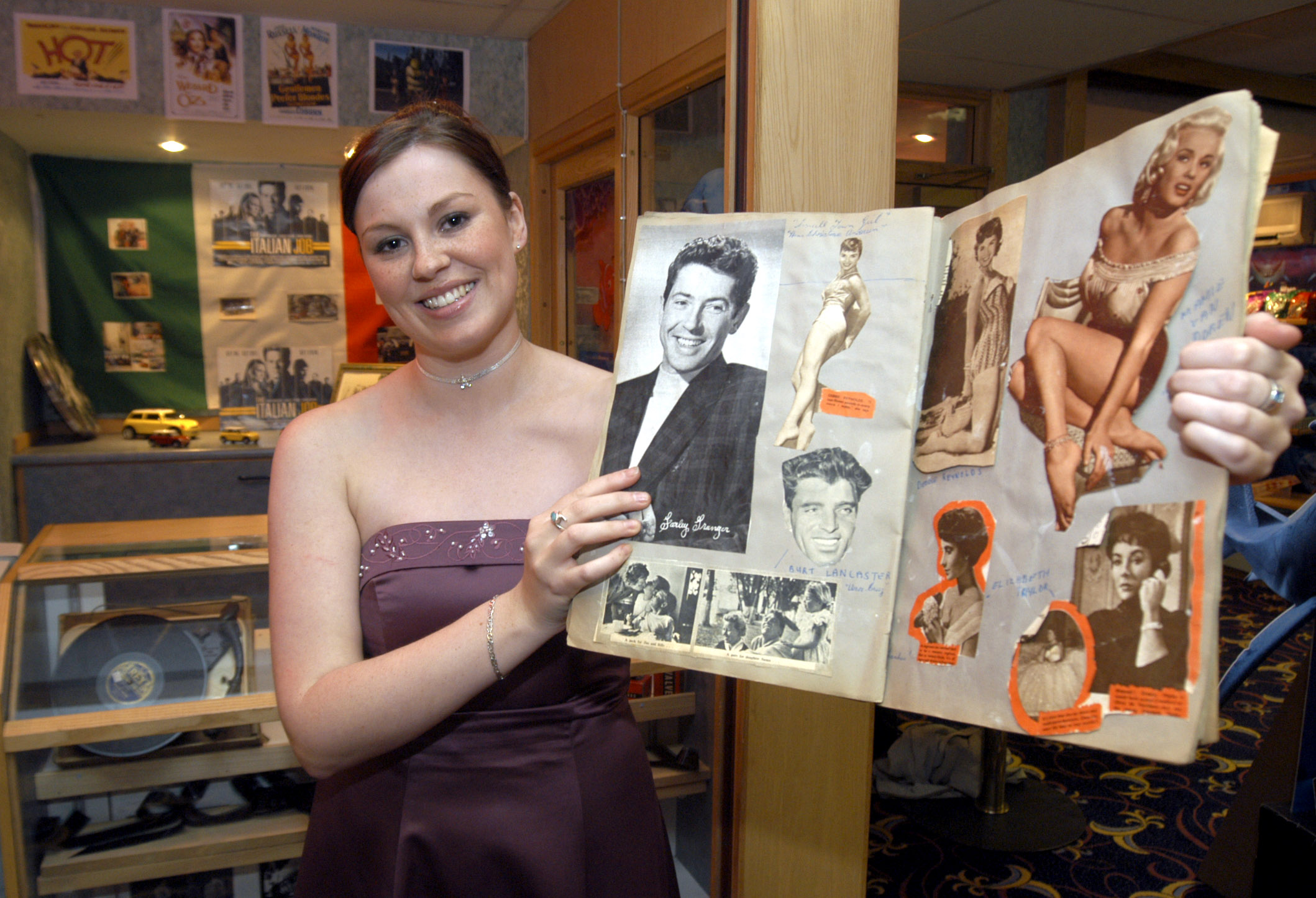
I began delving further into the cinema’s past and quickly discovered that 2003 marked the cinema’s 65th anniversary. I began sketching out plans as to how a special weekend celebration may look, and a campaign was launched to discover Stirling’s all-time favourite films, which would be screened throughout a special celebratory weekend.
We wanted to create as closer representation to what visiting the cinema would be like in the 1930s as possible – complete with Pathe news reels from the era and a weekend packed with films from the golden age of cinema.
A memorabilia appeal was launched, with treasured antiquities from its rich past being loaned to the cinema. A photograph depicting the very first members of staff from its 1938 opening was discovered, slides from the Second World War (used to signal to ARP wardens that an air raid was imminent without worrying the audience), which had been kept by the son of a retired projectionist, were put on display, as well as very personal memories shared as to what the cinema meant to its customers.
However, I realised that if Stirling’s cinema was truly to be put on the map, I needed to think big. Could the Allan Park Cinema achieve the impossible? I tabled the idea to build the world’s largest popcorn and waited to hear with earnest…
The monster challenge
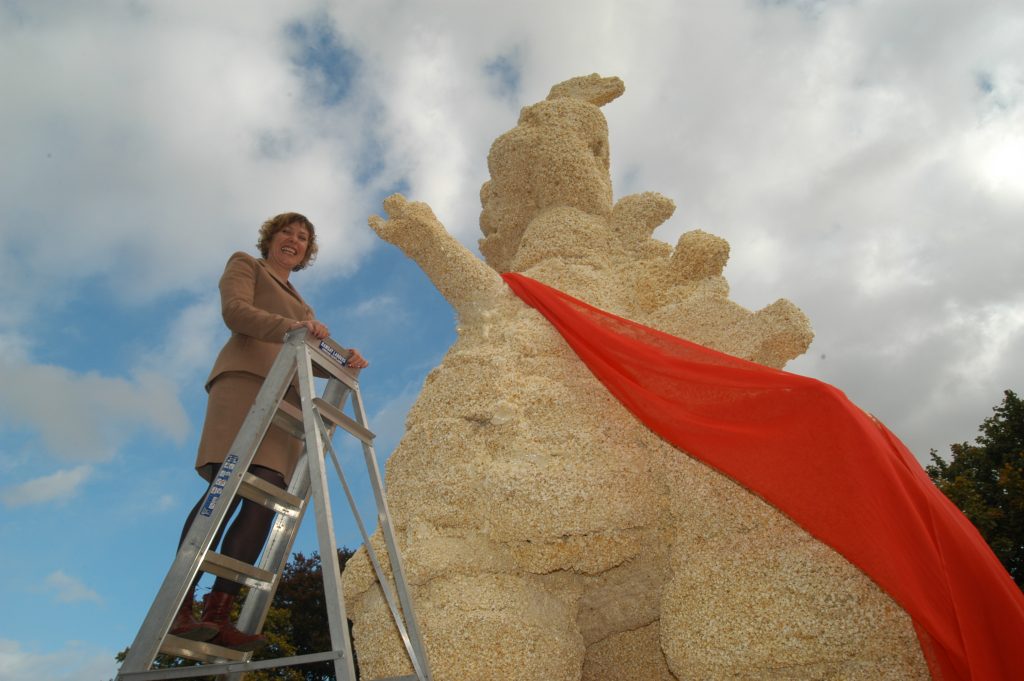
Having received the seal of approval from the cinema, I began putting plans into motion. Could it be achieved? Was it even possible? There were doubts from the very start. To bring a Guinness World Record to Central Scotland, a monster effort would be needed: and that’s exactly what was delivered.
The rules for making world-record breaking popcorn sculptures, as I soon discovered, were fairly stringent: The structure needed to be solid, it must be completely self-supporting and measurements must be independently verified.
Guinness World Records also confirmed that an existing record had been set for a popcorn sculpture. The target to beat was 13 ft 9 in. No mean feat, considering that the average piece of popcorn is less than 1 cm in size!
Godzilla was chosen as the subject to be recreated in popcorn form; all I needed to do was find someone with the sculpting skills who willing to take on the project.
Following several different approaches (and a few immediate dismissals as a hoax), artist Emma Herman-Smith decided to rise to the challenge of the fairly unusual commission. The top-secret work began upon bringing the idea to life in Emma’s Edinburgh studio, before the design was carefully packed up and transported to Stirling.
To complicate matters further, the structure was intended to sit on the roof of the Allan Park Cinema, enabling it to be floodlit and to maximise visibility of the project. This meant the sculpture being made in sections, small enough to be able to fit through a 5 ft doorway, which provided access to the roof, before being reassembled in situ.
Building Godzilla: How the sculpture took shape
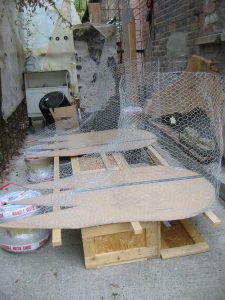
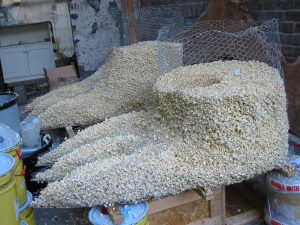
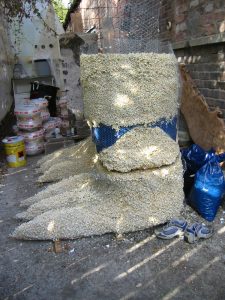
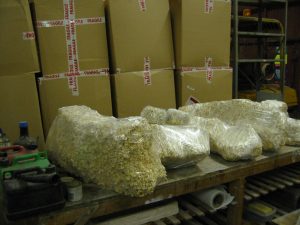
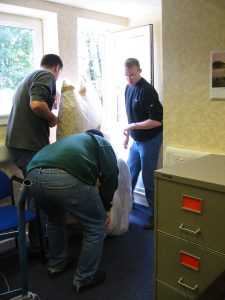
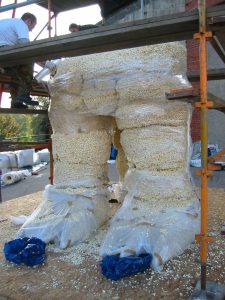
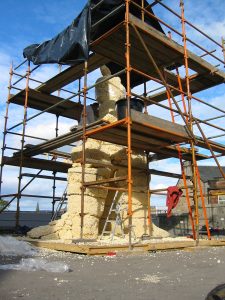
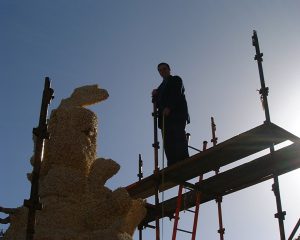


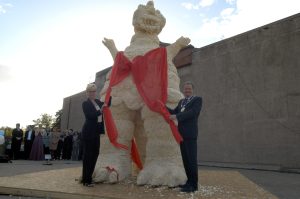
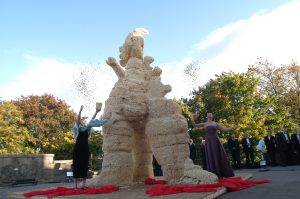
Official launch

Needless to say, as the sight of a 16 ft tall Godzilla began to emerge on the rooftop, the desired effect was achieved. Guinness World Records verified the sculpture as a true world record, and the Godzilla sculpture became the talk of the town. With extensive media coverage of the weekend achieved, all that was left to do was to enjoy the show.
The cinema staff swapped their standard uniforms for dinner jackets, reflecting the uniforms of its original 1930s workforce. The opening show of the weekend – chosen by the public as Some Like it Hot – was met with rapturous applause from its visitors, and in the months that followed, the Allan Park didn’t just break even, but for the first time in years, successfully returned to profitability.
The campaign itself was recognised as one of the best consumer PR campaigns in Scotland at the 2004 CIPR Scotland PRide Awards.
The Guinness World Record set by the Stirling Godzilla, as the world’s largest popcorn sculpture, stood for three years, before heading stateside (the current record stands at 20 ft and was set in New York).
However, the Guinness World Record certificate for the Allan Park states, “Largest Popcorn Sculpture in the form of Godzilla”, and to the best of my knowledge and 21 years later, that particular record still stands.
So, the big question: given the chance, would I do it again today?
Well executed PR stunts can be a highly effective way of engaging with a large audience. You only need to look through the industry titles such as The Drum to illustrate how creativity plays an integral role in effective communication (link: https://www.thedrum.com/topics/pr-stunts).
I suspect that the sight of a large popcorn sculpture would capture the public imagination just as much today, perhaps even more so than it did back then. Especially if integrated communications channels such as social media, video and e-marketing were all harnessed as part of an integrated campaign.
What the Stirling popcorn sculpture really achieved was much more than a Guinness World Record, it was about community: bringing people together, rekindling a fondness for a place that had all but been forgotten about, and if the opening of Rotherham’s brand new cinema achieves even just a fraction of that, the opening of the Arc Cinema could well prove to be a transformational moment for Rotherham.
